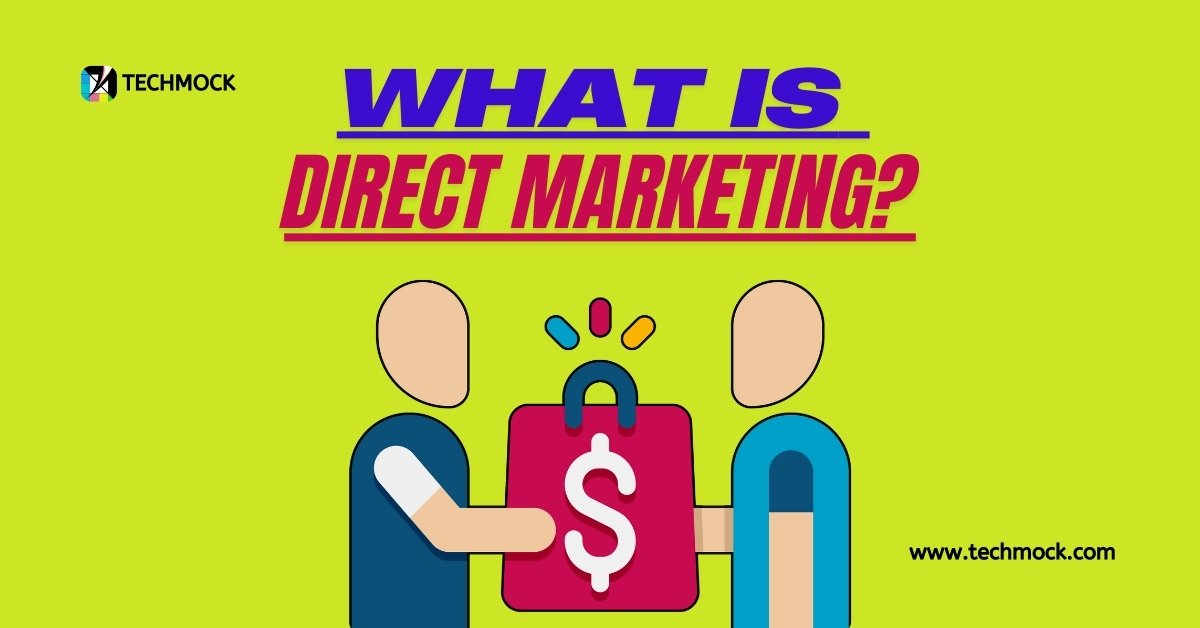What Is Direct Marketing?

Direct marketing is a targeted approach to advertising that communicates information about a product or business directly to individual customers, bypassing mass distribution channels. This strategy leverages various tools such as email, social media, telemarketing, and even in-person meetings to establish a one-on-one connection with consumers.
What is Direct Marketing?
Direct marketing is a form of advertising where a brand delivers its message straight to potential customers without intermediaries like TV or radio. Methods include email campaigns, social media direct messages (DMs), mail-order catalogs, promotional flyers, coupons, telemarketing, and door-to-door visits. Unlike mass marketing, direct marketing emphasizes personalized and direct communication to encourage specific actions from recipients.

Goals of Direct Marketing
The primary aim of direct marketing is to create a personalized experience that persuades the recipient to take specific actions. These actions could include:
- Visiting a website
- Calling to learn more
- Returning a form to request a quote
- Providing personal contact information
- Making a purchase
Personalization is key to direct marketing success. Marketers often use techniques like mentioning the recipient’s name or referencing a recent interaction to create a tailored message.
Suggested image: A graphic showing a personalized email or message addressed to "John Doe" with actionable prompts like “Shop Now” or “Learn More.”
Types of Direct Marketing and Examples
Direct marketing can take many forms, each tailored to specific customer interactions. Here are six common types:
-
Email Marketing Email marketing involves sending newsletters, promotional offers, or announcements directly to customers. Segmentation allows businesses to deliver highly personalized messages, increasing engagement.
Example: A running club sending tips for improving speed alongside a coupon for new sneakers.

-
Social Media Marketing Social media platforms like TikTok, Facebook, and Instagram are powerful tools for direct marketing. Brands use direct messages or targeted ads to engage specific demographics.
Example: An acne remedy ad targeting teenagers following popular influencers.

-
Catalogs Catalogs showcase a brand’s products, providing a tangible or digital experience for customers to browse. They’re often sent to those who have shown prior interest.

-
Flyers, Postcards, and Coupons Physical or digital materials like flyers and postcards communicate sales, new launches, or upcoming events.
Example: A supplement brand sending postcards to repeat buyers who haven’t purchased in 90 days, achieving a 1,052.8% ROI.

-
In-Person Direct Selling Personal interactions, such as door-to-door sales or pop-up shops, allow immediate feedback and foster strong customer relationships.
Example: A pop-up shop in a busy mall demonstrating new tech gadgets.

-
Telemarketing Telemarketing involves contacting potential customers via phone to sell products or services. This direct approach is effective for generating immediate responses.
Example: A cold call offering a free trial for a subscription service.

Advantages of Direct Marketing
- Personalization: Messages are tailored to each recipient, increasing engagement.
- Cost-Effective: Resources focus on likely buyers, reducing waste.
- High ROI: Targeted efforts often lead to higher conversions.
- Measurable: Campaign success is trackable, providing actionable insights.

Challenges of Direct Marketing
- Initial Costs: Designing and launching campaigns can require significant investment.
- Limited Social Proof: Personalized communication lacks the widespread testimonials and reviews seen in mass campaigns.
- Lower Reach: While targeted, it may not suit brand awareness goals requiring broader exposure.

Direct Marketing FAQs
- What is direct response marketing? It’s a strategy aimed at eliciting immediate action, like signing up for a newsletter.
- What are the main types of direct marketing? Email, mobile marketing, social media, and direct mail are common.
- What is the most common method? Email marketing, thanks to its cost-effectiveness and ease of implementation.
- What is the objective? To generate a measurable response and refine strategies for better results.

Direct marketing remains a powerful tool for businesses to connect with their audience on a personal level. By focusing on the right people, with the right message, at the right time, brands can achieve impressive results while building lasting relationships with customers.











